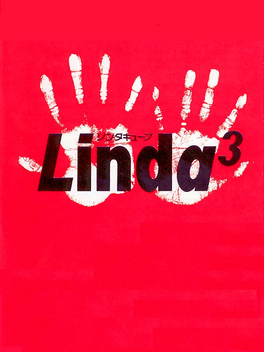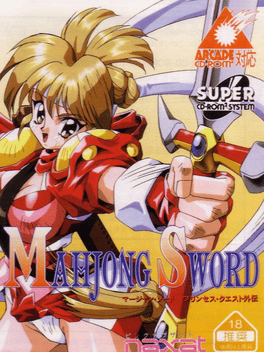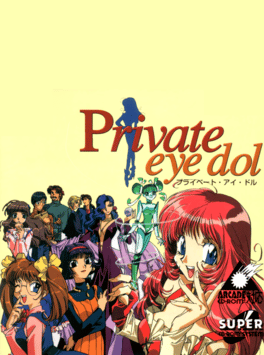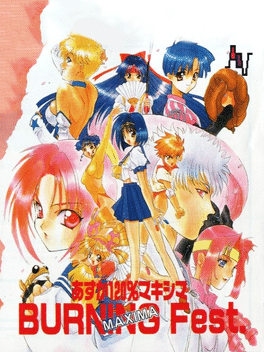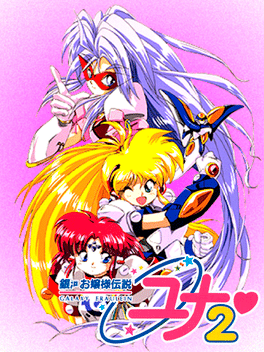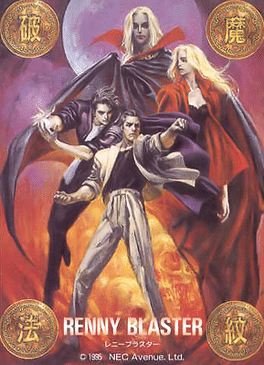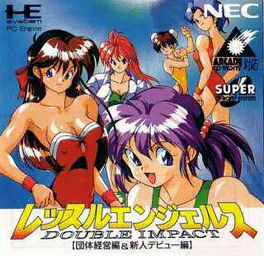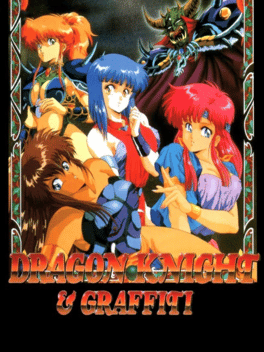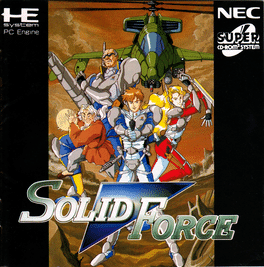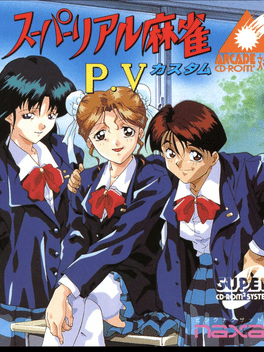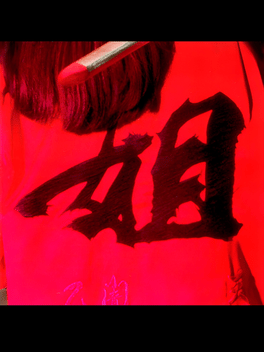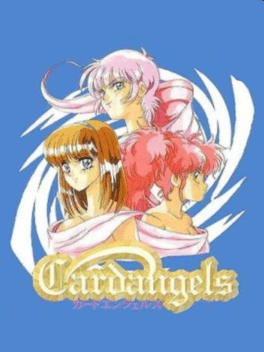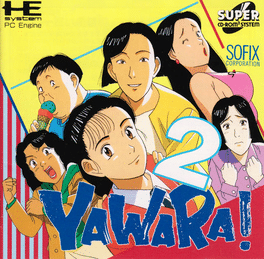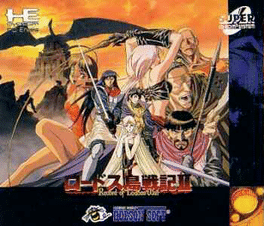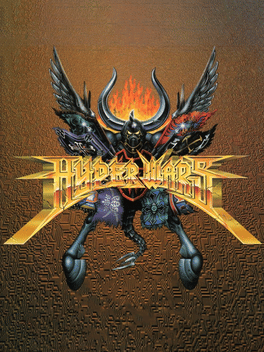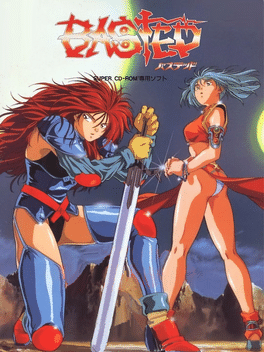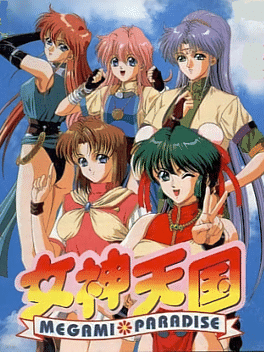New Turbografx 16 Slash Pc Engine Cd Games - Page 2
-
Linda Cube
1995
Linda Cube
1995
Linda Cube is an esoteric JRPG that combines elements of psychological horror with monster collection. Neo Kenya is the name of a world that is in danger of being completely annihilated by an asteroid. The armies of Neo Kenya have searched for every conceivably way to prevent the coming catastrophe. When the inhabitants of the world turn to a dark god, their prayers and nightmares come true. Originally released for PC, Linda³'s shockingly violent scenes earned it one of the few “18+” ratings on the system. -
Mahjong Sword: Princess Quest Gaiden
1995
Mahjong Sword: Princess Quest Gaiden is a Mahjong video game developed and published by Naxat Soft for the TurboGrafx-16/PC Engine System in 1995. It is a censored port of the PC-98 game, "Mahjong Sword: Princess Quest" which was released a few months prior and the game is an off-shoot to the quirky PC-98 Board / Card RPG, "KuruKuru Party: Princess Quest" -
Private Eye Dol
1995
Private Eye Dol
1995
Adventure game for the CD-ROM² addon for PC-Engine. The player navigates Mei around the environment, examining locations and items of interest, and talking to other characters. There are no puzzles in the game, with the plot advanced by triggering events. Items are used automatically in their corresponding locations. -
Galaxy Fräulein Yuna 2: Eien no Princess
1995
The second visual novel in the Galaxy Fraulein series which still follows the daily adventures of Yuna, schoolgirl, idol, and galactic savior. -
Renny Blaster
1995
Renny Blaster
1995
A side strolling beat 'em up where you play as detective Fujiro who is hired to stop a gothic horror in the city. -
Wrestle Angels: Double Impact
1995
Wrestle Angels: Double Impact is similar in concept to Wrestle Angels V1, being a business simulation with turn-based wrestling matches between attractive young women. The game has three modes: exhibition, team management, and new player debut. Exhibition mode allows the player to select from a wide variety of wrestlers and compete in single, double, or tag-team (six wrestlers) fashions. New player debut puts the player in the role of popular wrestlers from the franchise, taking them through training sessions and a series of matches. -
Solid Force
1995
-
Super Real Mahjong P.V Custom
1995
Super Real Mahjong P.V Custom was released on March 3, 1995 by Naxat Soft -
Ane-san
1995
Ane-san
1995
The two sisters, Ai and Yuuko, have taken different paths in life. Yuuko has been taken away by a mysterious gang. Ai is determined to save her from the clutches of crime. In a seemingly all-female city overrun by insane workers, biker gangs, and assorted criminals, Ai and her friends Chika and Makoto decide to work together in order to restore the world to normality again. -
Cardangels
1994
Cardangels
1994
Cardangels is a card game in which the player takes the roles of the three friends, playing cards against young, attractive female opponents. Four types of card games are available: poker, blackjack, speed, and babanuki (a variant of old maid). A slot machine-like introduction determines which games are played against which opponents. The player can select the amount of rounds (minimum ten) needed to win a game and advance to the next opponent. The "free play" mode allows the player to choose the type of game actively, but the amount of available opponents is lower. There is no gambling in any of the games; points are awarded for combinations in poker and blackjack. The opponents undress after losing a game; however, they retain their underwear - there is no explicit nudity in the game. -
Yawara! 2
1994
-
Hyper Wars
1994
Hyper Wars
1994
Hyper Wars is primarily a managerial simulation; robot combat itself is calculated depending on how the player created and maintained his or her robots. The player controls a manager of a team which competes in a league, complete with schedules, stadiums, etc. The player is given an initial budget with which he or she is able to create the first robot models and train them. Each robot can be created by merging together various parts ("human", "beast", "bird", and so on). After creation, it is necessary to outfit the robot with weapons and upgrade its parameters by paying for training. When the player feels ready, the robots can be taken to combat arenas and participate in the tournament. -
Basted
1994
Basted
1994
Two young and lovely bounty huntresses, Ryeza and Anita, live in a village that is continuously attacked by monsters. One day, solving a little monster problem in the nearby forest, they encounter a mysterious masked man, who tells Ryeza she wields the power of the sacred jewel Basted. Soon the two girls join forces with a princess in exile, and work together to restore the throne to its rightful owners, persecuted by the ruthless Empire and its allies. Though Basted may look like an RPG at first sight (medieval setting, top-down world, game progression that alternates between towns and dungeons, etc.), it is in fact primarily an action game. Controlling Ryeza and Anita, the player explores the surroundings, talks to people and participates in battles to advance the story. There are no levels, items, equipment, money system, or other required RPG elements. Most battles occur as dictated by the plot, though some are optional. The battles take place on a separate screen. For most battles, the player is able to choo -
Megami Paradise
1994
Megami Paradise
1994
Megami Paradise is a role-playing game by NEC Home Electronics and released in 1994 on the PC Engine Super CD-Rom. It was originally one of the reader-participation projects serialized in Dengeki PC Engine, and later OVA and games were released. The OVA is also sold in North America, but the game is sold only in Japanese. The appearance and parameters of the character change with changing clothes. Wearing certain combinations of clothes makes it possible to use special techniques. Also, if you wear specific clothes set for each character, you can see a single picture called "Zubapita graphic".
